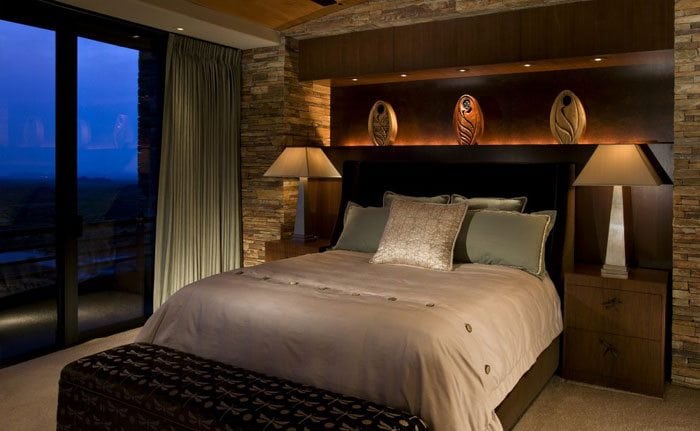It’s the first thing we do in the morning once our feet hit the floor. We flip the light switch. Then it’s the last thing we do at night. And then we use light for just about every activity in between. Light is fundamental to our lives and most of us take it for granted.
However, we primarily recognize lighting when it is either poor (hurts our eyes or we can’t see) or it is beautiful – when the glow of a warm lamp falls on a cozy couch layered with pillows or an uplight hits the angles of a piece of artwork just so. Then we sigh. We look in awe and say “Wow” beneath our breath, and we enjoy it.
This leads to the point of this post. When designing your lighting plan, you have to consider both aspects of lighting, functionality and beauty. Long gone are the days where having one bright
light in the center of each room was enough. You must think about lumens, color, shadows, task lighting, mood, and a host of other factors to effectively light your space. And part of that effectiveness is your budget and saving as much money as possible while still getting the effect you deserve. This means starting on the right foot with a reputable lighting supplier and partner, but also taking some time to think about your lighting needs. Here are some things you should consider when designing your lighting plan.
Room Inventory
What is in each room? What do you want to highlight or downplay? What are the unique shapes of the room? Where does the natural light come in during different parts of the day? What
happens in each room?
This brings us to task lighting. Take a few moments to consider what will happen in each section of the room. Is there a desk that will require a light for working on the computer or writing out
letters? Are there areas of the kitchen counter that will need more light for chopping fruits and vegetables? What about the living room? Do you want a space that can function as a family game night room
and a cozy reading area?
The answers to these questions determine whether you need accent, ambient, task lighting, or a combination. Many designers now think of their lighting needs in layers. Recessed LED cans for the ceiling provide a lot of light when you want it, and can be dimmed for relaxation. Chandeliers, bar lights, sconces, floor lamps, table lamps, and small spotlights may be the “seasonings” you put in each room for personality, function, and mood. Color of Lighting Lighting color has a few different aspects. There is the color of a light, like red, green, or blue LED strip lights. Then there is the color temperature of a light which ranges from warm to cool. Think of a spectrum with UV light on one end and Infrared on the other. The color spectrum is everything in between. You have probably noticed it with things like headlights. Older lights are yellow and newer lights are bright white and even blue-toned. It’s the same with bulbs for inside.
The color temperature is measured in Kelvins. 2000-3000K is warm white. It evokes an ambience that is cozy, calm, inviting, and intimate. Traditional lighting like incandescent bulbs, a favorite among designers for their golden tones, sits in this range. Next is the 3100-4500K range which is bright white. This is vibrant and cool. Finally, we have the 4660K to 6500K range which is very crisp and mimics being in direct sunlight at noon. LED light bulbs can be ordered in the full spectrum making them ideal for homeowners and designers to have a nearly unlimited selection. Take these points into consideration before any renovations or a new build.
Author bio – Gilbert Cabrales has been with CS LED since its inception in 2008, first as an employee and then as a valued partner. Gilbert has vast experience in both lighting and
electrical work and has a unique method for collaborating with his clients. He doesn’t stop at the sale. Instead, he works to truly connect with his clients and remains a resource throughout the
lifespan of each one of their lighting projects. From design to implementation and beyond, you can count on “Gil” to deliver LED expertise and true partnership capabilities.


